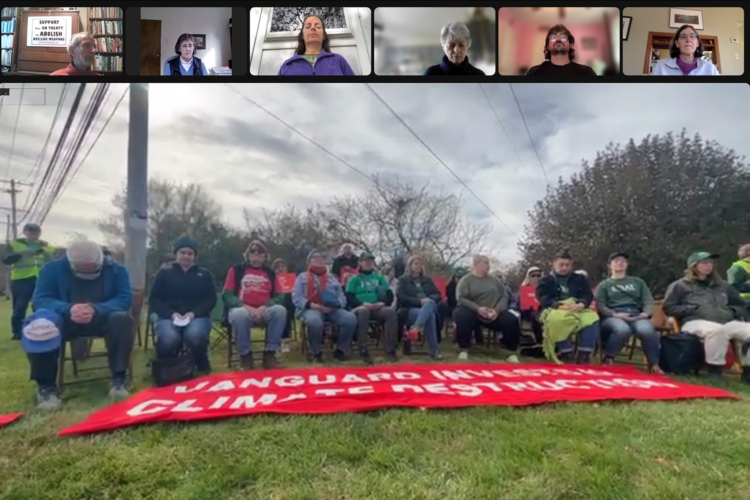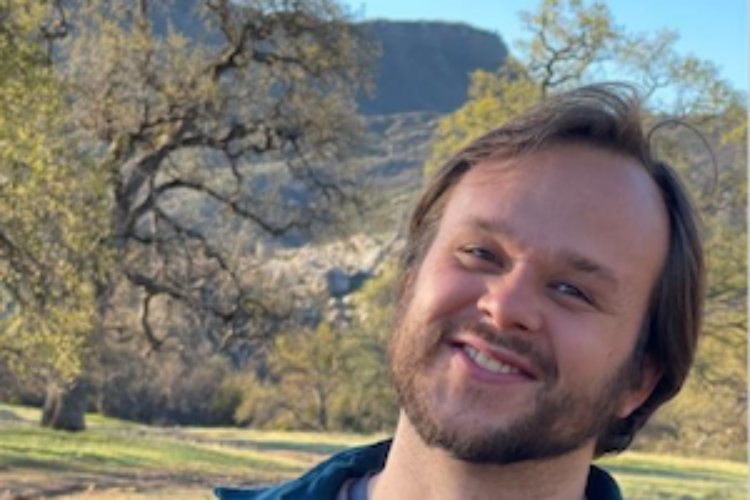The Sacred Depths of Nature

Both Ancient and Modern Traditions Are Held Together
by Mary Coelho
We are invited to continually seek to discern the ways in which we are alienated, often without conscious awareness, from the sacred nature of the natural world. Considering two unexpected sources helps us become more aware of our narrowed consciousness.
Mark Wallace, a Professor of Religion at Swarthmore College, wrote an article entitled “A Beaked and Feathered God.” He shares how deeply moved he is by the wood thrush song in the woods next to his home. He would wait for the return of the thrush in the spring. Moved by this experience, Wallace pays special attention to the significance of birds and other creatures in the bible. In the accounts of the dove at the baptism of Jesus, there is a significant difference in how the story is told. Wallace pays attention to this writing that in The Revised Standard Version, “The Holy Spirit descended upon him as a dove, whereas the New Revised Standard Version prefers a simile: the Holy Spirit descended upon him like a dove.” Wallace points out the significant difference between the Spirit being a dove in contrast to a “temporary bird-like appearance.” Wallace explains that The Revised Standard Version draws on indigenous traditions in the Old Testament, the animist belief that everything is alive with sacred presence.
David Peat, a quantum physicist and the author of the book Blackfoot Physics became well acquainted with the traditions of the Blackfoot tribe through extended visits, conversations, and participation in sacred ceremonies. He writes, “I am in the position of being able to have a dialogue between two different worldviews in such a way that I can understand something of those areas in which new ideas in the sciences can bring them toward traditional indigenous knowledge.” (p. 16) Once when listening to a woman speak about the Blackfoot vision, Peat recognized it was related to the way he had begun to see the world through his studies as a quantum physicist.
Mark Wallace offers a similar insight when he writes about parts of the biblical tradition. Based on his experience of “coming alive with wonder” when listening to the wood thrush song, he became open to recognizing that the Biblical animism traditions that claim that God’s presence at the baptism came in the literal form of a dove. He recognizes that the native Hebrew tradition is close to his experience of the divine when listening to the wood thrush. Wallace cites several examples in Genesis, Song of Solomon, Jeremiah, and Ezekiel of the dove as a living embodiment of God’s protection, healing, and love. Wallace is not surprised that the people present at Jesus’ baptism would take note of and record the presence of a dove.
He proposes that Christianity, in the account of the baptism, draws on the animism of the native Hebrew tradition. Although David Peat does not write about animism, he describes his recognition of the commonality between the worldview of the Blackfoot and the contemporary worldview he knew as a physicist. Both traditions recognize the experience of sacred presence within the natural world. Peat’s ability as a quantum physicist to hear what the Blackfoot tradition was saying and Wallace’s recognition of the native sacred tradition in the Bible that knew the dove was an integral part of a holy event helps us become aware of our alienation from the sacred presence in nature and all of life.
Thomas Berry’s landmark essay “The New Story” identifies the profound and hopeful change in the worldview that is emerging in our culture. The congruence of Peat’s ability as a quantum physicist to hear the Backfoot stories and Wallace’s insights into the animism of the native Hebrew tradition offer unexpected occasions enabling an embrace of the transformed worldview of the new story that teaches the presence of sacred depth of nature. We can celebrate the dimensions of a Biblical worldview, and contemporary quantum physics are no longer as opposed as we may have imagined. In fact, they both bring an invitation to embrace and experience the sacred depth of nature.
Listening to the native traditions in North America, those in the ancient Hebrew tradition, the witness of the Celtic tradition, and the revelations of the new physics, QEW’s witness is strengthened. Thomas Berry has told us; western consciousness certainly does need a new story. We are encouraged to seek to experience the sacred nature of the natural world. A cultural change to QEW is offered. The “new story” group at Friends Meeting at Cambridge seeks to explore and celebrate this profound opportunity to help change the secular nature of much of the Western world. Quakerism and QEW can be strengthened and become a strong voice as we awaken to this heartening good news.
Mary Coelho is the author of the book The Depth of Our Belonging: Mysticism, Physics and Healing and is a member of Cambridge (MA) Friends Meeting.
References:
Blackfoot Physics, F. David Peat, Phanes Press, 2002.
A Beaked and Feathered God, Mark L. Wallace, 2014 Tikkun Magazine
Thomas Berry, The New Story, Teilard Studies Number 1.


